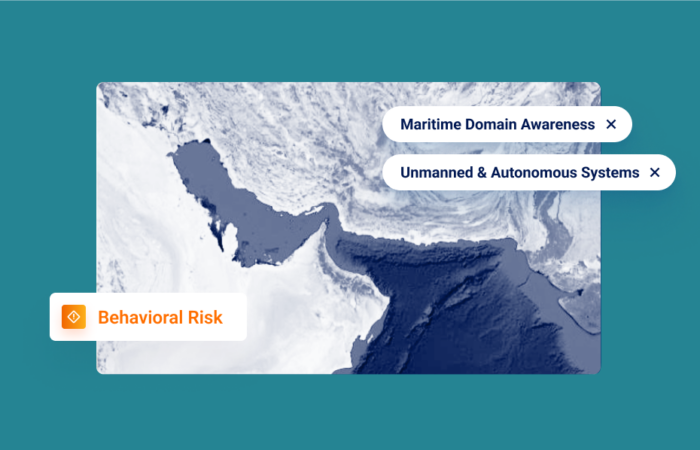The Challenges & Benefits of Unmanned Technology for Maritime

What’s inside?
Unmanned Tech’s Challenges
The sea of data generated in today’s digital ecosystem makes it impossible to see through the noise and quickly overwhelms available resources – there are hundreds of millions of raw AIS messages transmitted daily, before adding in all the unmanned data!
See our previous blog post in this series about how unmanned technology is having a maritime moment.
Simplification increases the accuracy of vessel movement mapping and makes it possible to process massive amounts of data. Sharing data with other teams and making strategic decisions in real time is also extremely difficult without a large base of fused and clean data.
The process of taking raw data being collected by unmanned assets, applying automatic risk assessments to prioritize investigation resources and human expertise, and yielding actionable knowledge in the form of new suspicious behavioral patterns, risk profiles, and automatic lead generation is how missions should be managed.
This is certainly not limited to unmanned missions. But the proliferation of unmanned systems and autonomous assets, and the growing reliance on them for ongoing maritime domain awareness, means that the number of missions being carried out at any given time is exponentially increasing.
To scale up, reliance on limited human expertise and insight has to be narrowed and applied only when it is most needed. The heavy lift of prioritizing the intervention of human analysts or forces has to be abandoned, and replaced by AI-based insights.
Unmanned Tech’s Benefits
The comparative benefits of unmanned systems are:
- Enhanced safety and risk reduction: avoiding putting people at risk is the most fundamental and crucial benefit of unmanned systems
- Operational endurance and reach: unmanned systems and assets are not reliant on supplies, can endure extreme weather conditions, and can go farther, for longer
- Cost efficiency: unmanned systems are easier to produce and operate. Their deployment is considerably less expensive – it uses less fuel and requires less logistical support and ongoing maintenance. The lower operational costs of unmanned systems make them a more sustainable and efficient option for long-duration maritime surveillance missions
- Scalability: autonomous systems can be built for scalability, especially when you broaden the definition to include sensors, buoys, and drifters.
Unmanned systems offer significant advantages over manned aircraft for MDA, including increased efficiency, lower risk, and lower environmental impact. As technology continues to advance, unmanned systems are also becoming more precise and reliable, especially with the introduction of AI, allowing real-time analysis and agility.
Recognizing the value of unmanned systems for MDA, many armies worldwide have adopted a “hybrid fleet” model that incorporates various unmanned systems into their operations. As this approach becomes more common, military and defense organizations confront challenges regarding the increased number of assets ready for deployment.
Unmanned systems allow for more missions. More missions inevitably increase the cadence with which organizations must confront the question: where do we deploy? And more deployments produce a lot more data, causing government and law enforcement agencies to frantically search for the proverbial needle in the haystack.
Our whitepaper, The 2 Factors that Unlock the Effectiveness of Unmanned & Autonomous Systems, can help you strategize on how to consistently find those “needles.” It analyzes two critical factors for maximizing unmanned tech and explains how to create common operation pictures.












